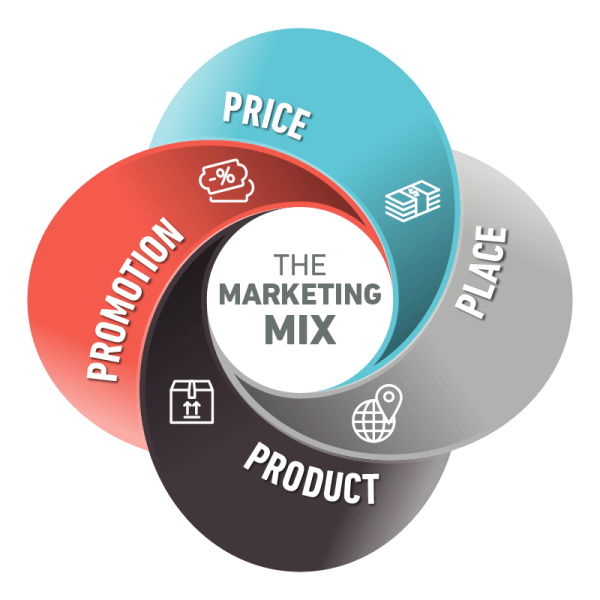Push vs. Pull Marketing: Differences, Strategies, and Tools
Despite what you may have heard, neither push or pull marketing is dead. They are very different methods of creating the same result: higher sales. Understanding the difference between them and how they can work for you can help achieve this marketing goal. Along with this, it is vital to know the tools that can help you implement each approach. All of this information will combine to generate a better end-result for marketing professionals.
| Push Marketing | Pull Marketing | |
| Other Names | Old Marketing, Interupption Marketing, Outbound Marketing | New Marketing, Inbound marketing |
| Medium and Types | TV Ads, Radio Ads, Billboards, Banner Ads, Newspaper and Magazine Folds | Blog and Website content, How-tos, Newsletters, Assistance Videos |
| Best for | Push Products to a Broad Audience, Interrupt the Customer, Sell Why the Product is Right for ThemTldr:You Find Leads | Drawn Clients in, Generate Genuine Interest and Solve Customer NeedsTldr:Leads Come to You |
| Cons | Smaller ROI, Expensive and Can Fail to Yield Results, Huge Competition | Requires Smart Targeting and Customer Understanding |
What Is Push Marketing?
The idea of push marketing, as the name suggests, revolves around taking a product to the customer. This is the type of marketing many individuals who are not marketing professionals would identify as more traditional ad forms that have been used for decades. When you walk into a grocery store and see a Buy-One-Get-One offering on red velvet cookies, this is a perfect example of this marketing strategy.
The core tenant of this method revolves around generating awareness, creating a sense of need, and fulfilling the customer’s newly found desire. Think of this as convincing someone to buy something they didn’t know they needed.
Perhaps you did not come into the store for red velvet cookies, but they look delicious. The BOGO deal creates a sense of urgency and FOMO, so you feel like you’re losing money by not buying them.
The flow of communication in push marketing is very one-sided. A company tells the consumer about its product and adds incentives to try and persuade them to purchase. That is effectively all there is to it.
Push marketing will often cast a very wide net in the hope of generating sales. Ads tend to be “interruptive” in some way. A TV commercial interrupts your show. A billboard interrupts your line of sight. Radio station ads cut through the music on a long drive. One of the biggest limitations of push marketing is that it often pushes products onto uninterested customers. This results in low success rates (aka sales), hence the ‘spray and pray’ approach.
Another term for push marketing is outbound marketing. You may also hear the terms old marketing and interruption marketing. As a company, you would go out and search for sales leads, rather than having them come to you.
What is Pull Marketing?
Pull marketing works in nearly the opposite way of push marketing, but with the same motivation. While both have the underlying goal of generating sales for their organization, the approach is different.
Pull marketing relies on drawing potential customers in and actively engaging them. The customer is the focus of this marketing strategy and leads the sales experience. Where push marketing involves a company sharing information, pull marketing encourages the customer to actively seek out and self-serve this information.
This strategy can take the form of engaging blog and website content, social media, and more. How-to and other types of tutorials are common. An example of this would be a helpful video from Expedia, outlining why Bali is an amazing place to travel. This may include information on the climate, customs, food, and more.
In this video, you may see advice on how to travel safely. They could explain the history of the country and its important landmarks. None of this is directly pushing a sales package or flight bundle. This may link to a “top 10 places to visit in your 30s” post, or be linked from an Instagram photo.
The purpose of this content is to make the customer genuinely interested in the product you are selling. From here, the customer generates the demand themselves. They come to your website, and read at their own pace, looking for the information they want.
Pull marketing relies on customers developing a positive association with your brand. This can involve two-way communication. Chatbots may be available to answer questions, and feedback forms let the customer have a say in the sales process.
The key component of this marketing strategy is the requirement of pre-existing customer interest. A helpful travel blog post means nothing to someone who has no interest in Bali. As a result, they would not click the link, and this content would have no impact on them.
Pull marketing then is far more specific in its audience targeting. It can require a more nuanced marketing strategy and careful consideration of the user experience of what is being produced. Pull marketing tends to be a part of a more comprehensive marketing strategy, using SEO to tap into interested customers.
How to Get the Most Out Of Push Marketing
Despite the “old marketing” nickname, push marketing absolutely has its place in modern sales strategy. This method is right for those who need to raise awareness about their product, have a broad customer base, and want to more actively sell it to the customer.
The most successful push marketing will strategically interrupt potential customers. Organizations should look to quickly inform and entertain a potential customer. If they feel annoyed by your content, it will be far harder to persuade them of your product’s worth.
Arguably the most important part of a push marketing strategy is how attention-grabbing it is. Most people see thousands of ads per day. As a society, we have become adept at ignoring those that do not appeal to us. You will have to cut through the noise and do something to stand out.
Strong push marketing takes lessons from its historical failures. While casting a larger net is an important hallmark of this strategy, there is no need to do so blindly. The rise of SEO and SEM allows organizations to more carefully target ads.
Focus on placing your ads in environments where they can be successfully interruptive. Advertising a new mobile video game on a local talk radio station is probably a waste of time and money. Think about who will be receptive to your interruption, and work from there.
Finally, remember that while some elements of push marketing can be outdated, many do work. BOGO deals are still extremely popular for consumer products because they work. Remembering the 4 P’s is vital for this classic method of marketing strategy.
How To Get The Most Out of Pull Marketing
Pull marketing is all about the relationship you build with the customer. This is nearly impossible if your customer does not know you exist. New and breakout products should consider push marketing. Once brand awareness is established, pull marketing can cut through the marketing noise and generate a greater ROI for your organization.
The best pull marketing strategies have strong products, strong content, and strong SEO. It may sound obvious, but the best way to create a relationship with a customer is to have a genuinely good product that they want to use.
Brand loyalty is an extremely powerful force, and pull marketing leverages this. By creating a bond with a customer, an organization can create a sense of ownership. This can even create free word-of-mouth referrals and reviews.
The main ways to do this involve interactivity and issue-solving. Create an environment where your customers can find the information that they want. Through FAQs, blog content, social media, pull marketing thrives when it allows customers a sense of control.
Some other strategies involve subscription content. Newsletters, both physical and digital, allow customers to opt into getting information. This allows you to introduce them to new products, reinforce old ones, and maintain brand loyalty. Those who use a combined strategy can find this to be the ideal location for more traditional ads as well.
Use SEO and audience segmentation to effectively reach those with an interest in your product. Modern search engines like Google rank genuinely helpful, relevant content. As a result, invest time and money in understanding how these rankings can work for you and your business.
Tools for Push and Pull Marketing
Customer Relationship Management software is a vital tool for both types of marketing, particularly for pull. This type of software is designed to help manage the entire customer lifecycle. Keeping track of all customer interactions within one system helps organizations provide a more seamless customer experience. Hubspot is a pioneer of pull marketing and offers a fantastic free CRM. Other options include Freshworks CRM, Pipedrive, and Salesforce.
Both types of marketing can take advantage of better audience targeting and visibility. Search Engine Marketing software provides many of the tools needed to do this. Pull marketing can harness SEO and SEM to better help interested parties find their audience and drive engagement. Push marketing can use this to target ads to those who are more likely to be receptive of them.
Google Ads and Microsoft Advertising are popular choices.
Regardless of the strategy used, the ability to drive traffic to your website and rank highly on search engine result pages can make your marketing more impactful. Any marketing professional would agree, more exposure to their content is better.
Marketing Automation is a software type that does much of what the name suggests. By automating repetitive tasks and allowing AI to assist, organizations can generate better marketing performance results. Growing companies can use this software to scale where conventional staffing would be impractical. The ability to conduct personalization and smart audience segmentation at scale is vital for marketing campaign success.
Marketing automation can have a strong focus on analyzing user behavior and overall marketing campaign performance. Pull marketing can use this to more proactively and confidently generate leads. This is a core tenant of this marketing type. Push campaigns can increase advertising volume and reach levels otherwise impossible with their existing staff size. For companies with smaller teams looking for free options, check out our piece on Free Marketing Automation Software.
More Marketing Resources
For those interested in learning more about different types of marketing strategies, check out some of our additional resources. Our piece on Inbound vs. Outbound marketing explains the differences between the two approaches.
Whether you’re targeting younger audiences with push or pull strategies, understanding how these different strategies work is vital. For those looking for tips on the incoming Gen-Z, check out Marketing to The Next Generation.
Finally, for those looking to improve their marketing strategies further, check out the video below on push and pull promotional tips. Remember, in most cases, a combination of the two is best for your specific use case.
Was this helpful?

